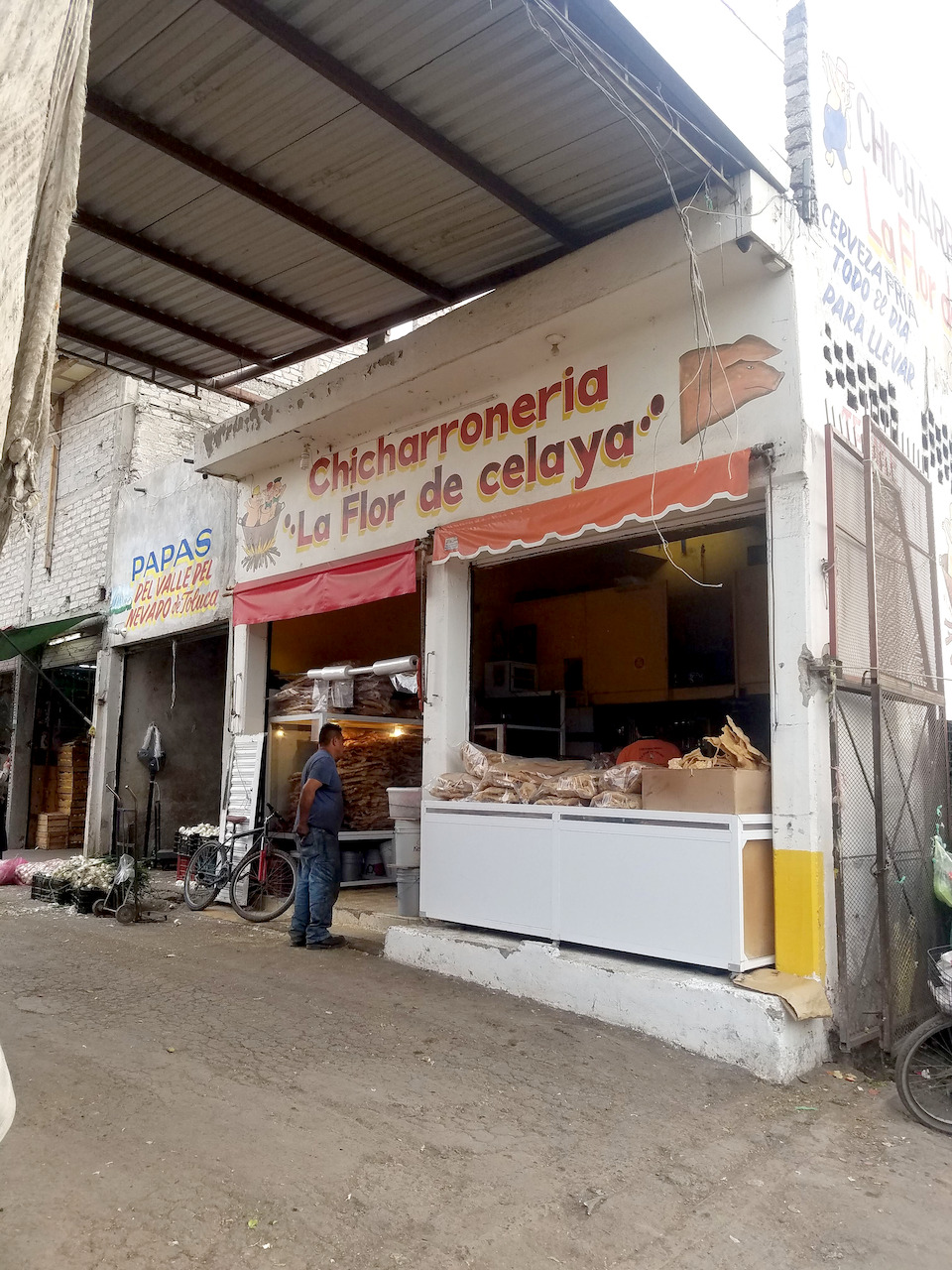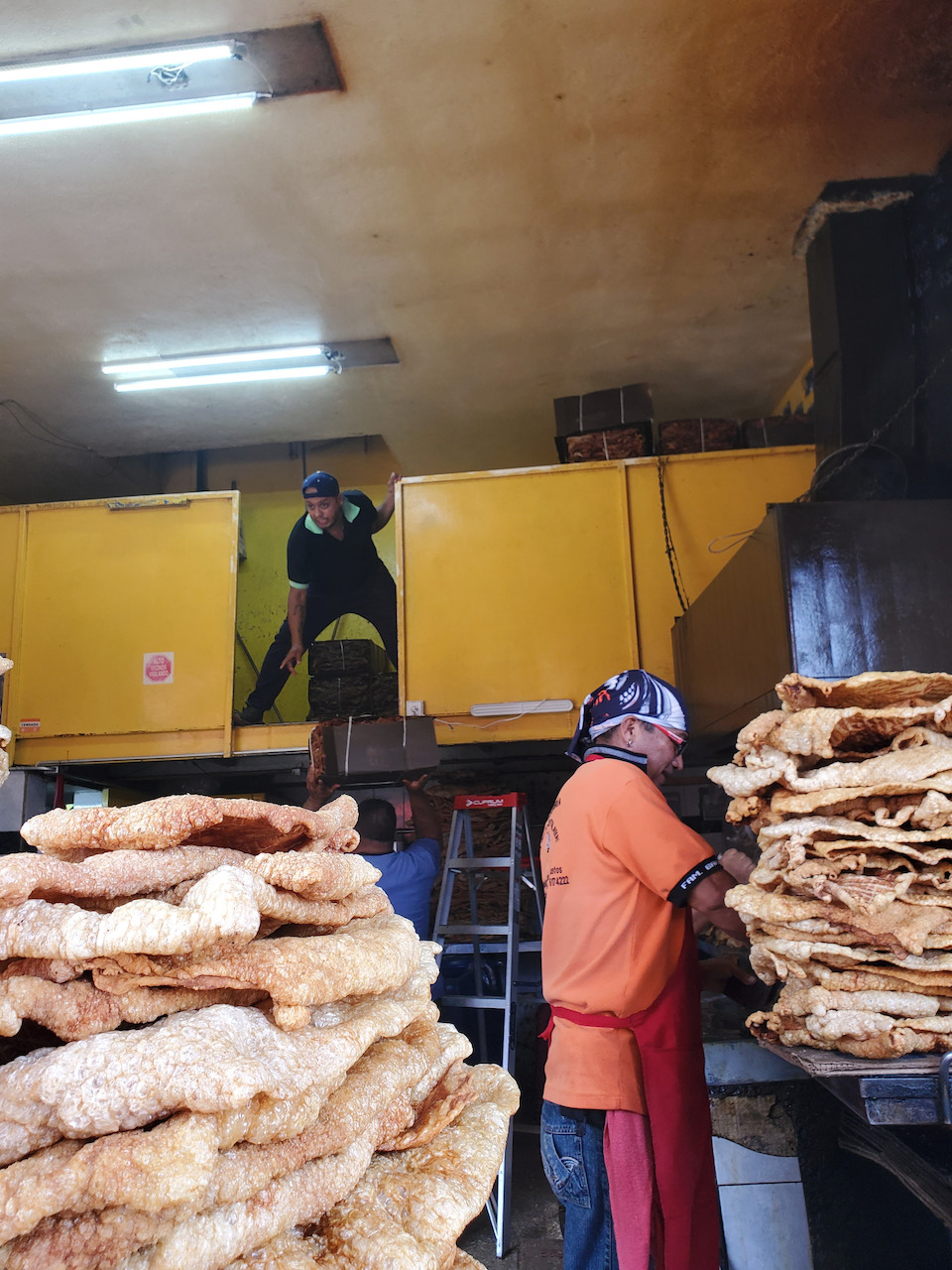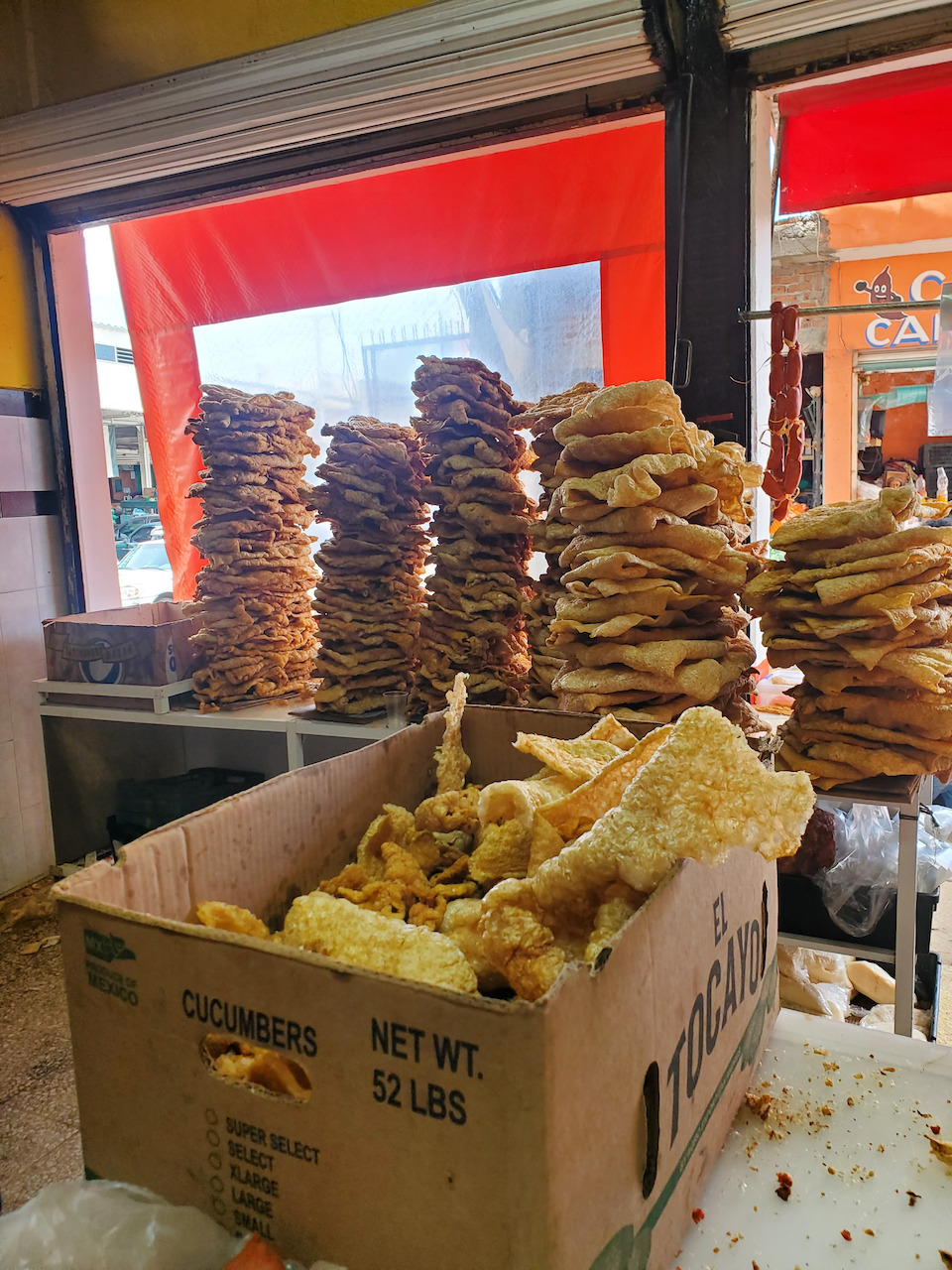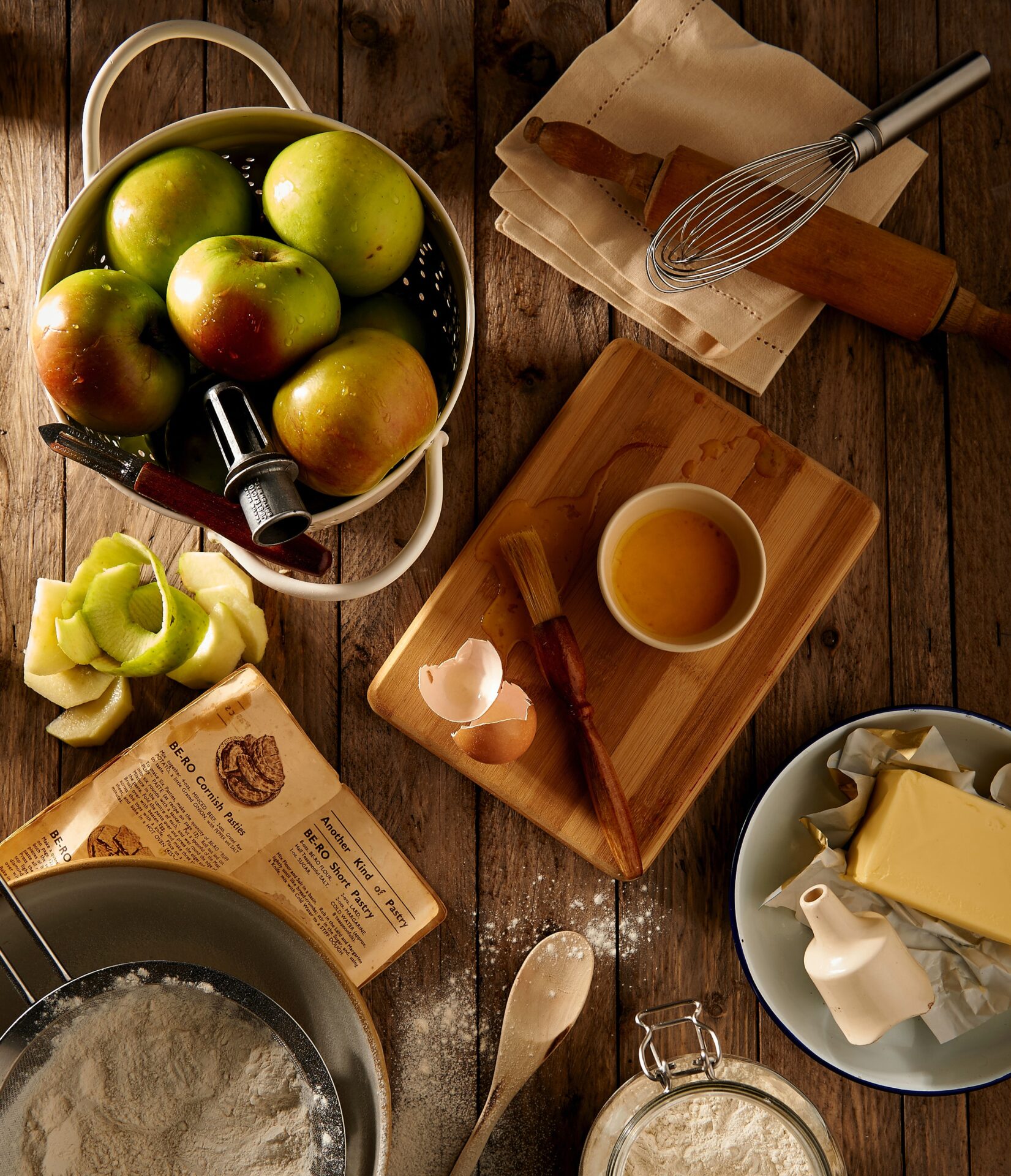The crackling chicharrones in this central Mexico market keep one North Carolina chef coming back
It used to be, around where I live in Chapel Hill, North Carolina, that when you rode through town, the roofing crews would all be listening to NPR on the radio as they worked. Then, all of a sudden, one day it was all Norteño and Ranchera music.
This was in the late ’90s and there was a chronic labor shortage here—most of the NPR-listening guys had moved on to other jobs just as hundreds of mostly young men had poured into central North Carolina from the town of Celaya in the Mexican state of Guanajuato.
I’m not quite sure why this happened—probably just the fact that a few men came here at random, found it welcoming, and began to tell their friends. None of these new arrivals were desperately poor. They were mostly working class; some of them were just young and looking for a little adventure.

My friend Luis Ortega told me that he came because his father told him to go and not come back until he had bought a pickup truck. His family didn’t really need the money. It was sort of like hitchhiking around Europe for a summer.
A lot of these new guys ended up in restaurant kitchens. Francisco “Pancho” Guzman was among them. He was one of several Mexicans I taught to make Southern desserts when I was the chef at Crook’s Corner in Chapel Hill. He was funny, friendly, and eager, and he picked it up quickly. He had a wife and two daughters back home. Working here, he paid for his house there.
He would have stayed longer, but a serious flooding of the Laja River required him to go back to Celaya suddenly in 2005. He took his KitchenAid mixer with him. At first, he tried to parlay his baking skills into a job in Celaya, but there was just no market for it. He was able to sell the occasional pineapple upside-down cake to the local school cafeteria, but that wasn’t enough, so he went back into restaurants for a while. Then, happily, he landed in the Flor de Celaya, a chicharroneria—that’s Mexican Spanish for a pork rind store.
And it is a remarkable place indeed. The Flor de Celaya is located right across from El Central Camotera (“sweet potato central”) in the Mercado de Abastos, or wholesale market. From the moment it opens each day, the Flor is a madhouse. It isn’t very large but has five or six employees, so space is tight. There is one guy at the fryer and another smoothing and flattening the sheets of pork rinds as they come out of the hot oil. Two or three men tend to the constant line of customers that crowds the front counter. The boss is the cashier.
The chicharrones start out as bales of precooked pork skin that look like cardboard that has been packed up for recycling. (Oddly, the precook has been done by a company in the US.) These are stored in an overhead loft, and they drip grease on those below. The frying is constant, and soon towers of pork rinds are on every flat surface except the floor. There is always the sound of crackling as they cool.

The men rotate jobs because the frying position is too hot for one person to do all the time. They sing and dance as they work. The repertoire is sometimes standard Mexican radio classics, but as likely or not it will be AC/DC.
Chicharrones weigh next to nothing, so even just a kilo is huge. You see people carrying big bags of them all over town. At first, I was puzzled as to why people were buying such enormous quantities of pork rinds from the Flor. Pancho explained that they are mostly for restaurants and food carts, more so than for home kitchens.
It’s crazy how much chicharron moves through the Flor each day. They fry until the stacks completely block your view of the road outside. They stop cooking at 2 p.m., but by closing time, around 4 p.m., nearly everything is gone. They do this seven days a week all year except for a few holidays.
One can buy chicharrones, lard, and chorizos here, too. Richard, the owner, has a side business selling cold beer both to his own employees and to other workers in the market—and to me. Whenever I show up, no matter how crazy the store is, a stool appears and I’m handed a cold one. It makes no difference the time of day. I need to act quickly lest they try to give me a caguama, a 30-ounce bottle named after the loggerhead turtle
The recipe [at the Flor deCelaya] is elemental: pig skin, salt, and hot grease—and I can never get enough.”
I go to visit my Mexican friends who have returned home whenever I can, and I’ve been stopping in at the Flor de Celaya for years. The staff has scarcely changed at all, indicating that it is a good place to work. Because they have worked so closely together for so long, they all know each other’s business so the teasing is merciless. They insult each other and roughhouse in between singing, dancing, and working. It sort of reminds me of my own kitchen in our heyday. I don’t miss that workload at all, but I do miss my cooks.

Celaya isn’t a typical tourist destination, but somehow it suits me to a tee. It’s in south-central Mexico in a region known as the Bajío. The weather is springlike year-round, and there are a lot of historical sites here from the war for independence, but no beaches or ruins—meaning it doesn’t draw visitors like other regions do, and that’s just fine by me.
The mercado is massive, and at certain times of the week, it is absolutely swarming with people, as if the whole city is there. Most towns of any size in Mexico have similar markets. The big cities have lots of them, from neighborhood to neighborhood.
In Celaya, the market has spread to both sides of the highway. One end of it pushes up against the bus station, so vendors can sell to travelers as well as merchants. There are tunnels underneath the road that allow you to walk back and forth. You can buy absolutely any kind of food here—there are stalls that have only enormous piles of sweet potatoes, while others will have all you need to make fresh salsa. There’s every kind of chili imaginable, the spice stores are eye-opening, and tucked here and there are places where you can buy things to eat and drink while you shop or work.
In the South, we can now buy pork rinds in many flavors. Not so at the Flor de Celaya. The recipe for chicharrones, there is elemental: pig skin, salt, and hot grease—and I can never get enough. Because they are so crispy when fresh out of the fryer, I’m always picking up crumbs to eat as I drink my beer. I make no pretense of resisting.
Celaya has gotten a little rough lately because the cartels are in a turf battle there. My buddies and I are more careful when we go out at night now. I take taxis a lot more than I used to. Almost everything has changed, on both sides of the border, since my friends started showing up in the late 1990s. But I’ll keep coming back to Celaya anyway. I love this place and my friends who live here. And, of course, the Flor and its chicharrones. I can’t stay away
share
trending content
-
The Ultimate Alabama Dining Guide | Listen
by Jennifer Stewart Kornegay -
6 Must-Visit Music Joints Across Mississippi
by TLP's Partners -
Taming the Flame | Listen
-
A First Look at Spaghett | Listen
by Amber Chase -
Celebrating Community at the Ruston Farmers Market
by TLP's Partners
More From On the Road
-
Exploring the Gullah Geechee Trail | Listen
-
A Taste of the American South in European Restaurants | Listen
-
Moonlight Train Trip to New Orleans | Listen
-
Get To Know Ellicott, Maryland | Listen
-
Get To Know Columbia, South Carolina | Listen







